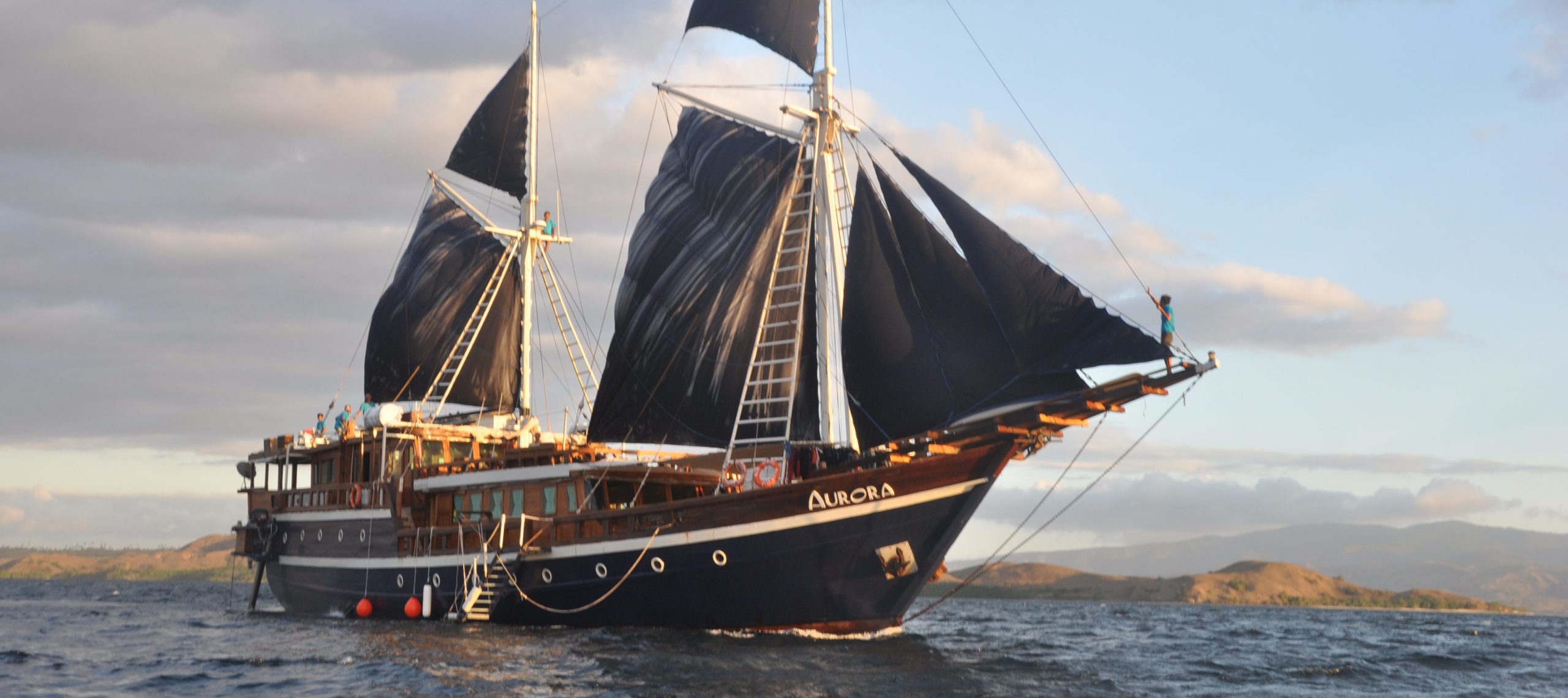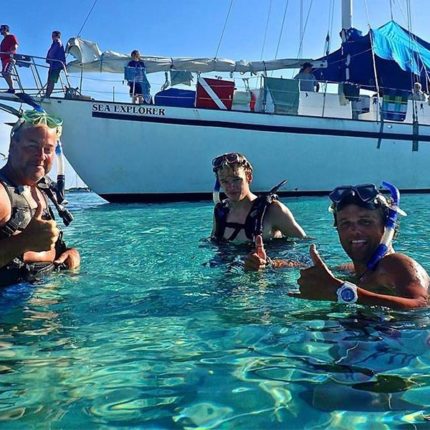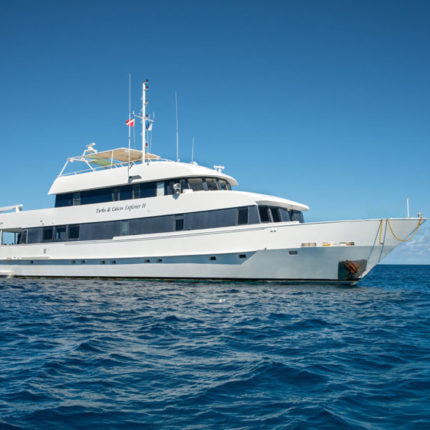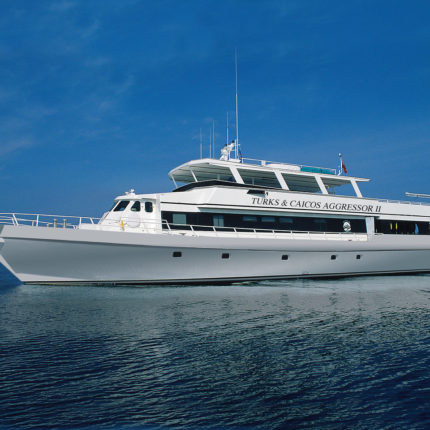Liveaboard – MS Aurora LiveaboardIndonesiaAn Introduction to Indonesia
This luxury liveaboard first set sail in Indonesian waters in the summer of 2009. Adventure, relaxation, comfort, and respect for marine biodiversity all came together when construction began on the Pinisi schooner in 2007. Built using environmentally friendly principles, and having the ability to explore many remote areas, this liveaboard is able to offer a truly unique experience. Aurora is a spacious yacht, designed for the diving world. There are 7 double cabins on board, 3 of which have the capability to accommodate a third person. Each cabin have a private bathroom and individually controlled air conditioning. On board, you will also find a saloon/restaurant with a library, computer room with a PC, DVD, and video, and a spacious sundeck. Aurora offers 4 unique routes for guests – Raja Ampat, Komodo, Banda Sea, and North Maluku: The large area of Raja Ampat is a marine reserve that stretches to the North, towards Waigeo, and to the south-west, towards Misool. Here you will be explore a labyrinth of straights between small sandstone islands. You can expect to see large amounts of marine biodiversity including manta rays, carper sharks, coral grouper, and angler fish. The best time of year for this route is November to March. Komodo is a journey leading through 2 oceans. A current is constantly flowing in Indonesia – from the Pacific to the Indian Ocean. As the Pacific mixes with the cooler waters of the Indian, you can see an incredible mix of Indian and Pacific fauna. The Pacific side will bring warm, clear water. Large colonies are hard coral and huge schools of fish, such as barracuda, help characterize the Pacific side. The Indian Ocean is characterized by cooler water. Shallow reefs with an abundance of soft corals will be found here. Aurora sails throughout the small islands you will encounter and will stop at a different bay each night. Encounters on Komodo often include the white tip reef shark, butterfly fish, surgeon fish, and fire urchin. The best time of year for this route is June-September. Banda Sea is a tour throughout the Spice Islands – known for their cloves, nutmeg, and encounters with pirates. From the beautiful blue waters of the Banda Sea, steep pinnacles rise from below, making the landscape here truly spectacular. The crests of these pinnacles are often surrounded by magnificent reef systems, often times large colonies of hard corals. Encounters on this route often include the green turtle, ghost pipe fish, mandarin fish, and the sea-squirt. The best time of year for this route is October. North Maluku takes you through a host of smaller islands as you sail north towards Papua. The Maluku reefs are home to a mosaic of different species. Here you will be able to explore many unknown reefs. You will also have the chance to participate in a muck dive, which is a dive on the muddy bottom. These are not the most glamorous of dives, but certainly one of the more memorable. Encounters on this route include clown fish, eels, Emperor Angelfish, and octopus. The best time of year for this route is October. Night dives are also organized on a regular basis. As long as conditions permit, you will have the chance for a night dive every night. A brand new world opens up after the sun goes down, and you will have the chance to see incredible marine life at night, and you will have the chance to see incredible marine life at night.
|








Reviews
There are no reviews yet.